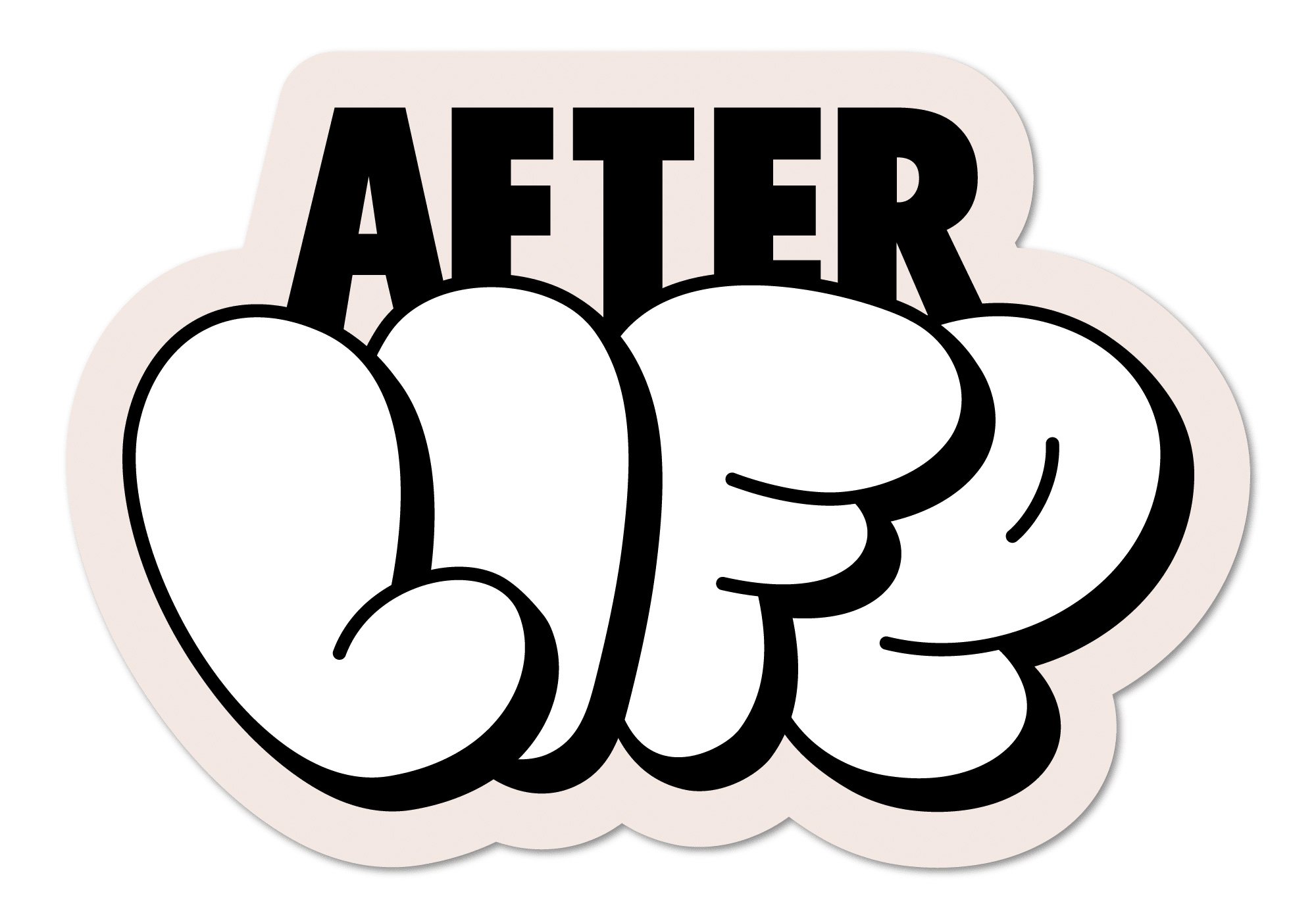Nom de Shroom
New Name, Logo, and Identity for Afterlife by Dragon Rouge
by Kate Melvin for Brand New (Original article)
September 12, 2023
Old logo vs. new logo
Launched in 2023, Afterlife is a circular startup that takes “food waste from partnering restaurants and food distributors,” uses fungi and mycelia to decompose it, and turns the byproducts into over 20 varieties of gourmet mushrooms that they then sell back to the food businesses. Any left-over compost is given to local community gardens as fertilizer. The founders decided to rebrand the original company, Peat, after peat (the soil) began to receive bad press. They also wanted to find a name that would better suit their company’s purpose. They worked with the New York, NY, office of Dragon Rouge to develop the brand’s positioning, name, and visual identity.
[The task was to] create the brand’s positioning, name, TOV and key messaging, and VIS to clearly convey the brand’s unique and sustainable offering. Develop a visual identity for a fresh, young company bringing a new perspective to a very corporate category.
Dragon Rouge provided text
The old name and logo were fine but a little safe, especially for such an interesting business venture. The new logo does a complete 180 by blending a bespoke graffiti type with a bold all-caps sans serif. I always appreciate a brand’s willingness to go in an unexpected direction, but this missed the mark for me. The idea of incorporating street art into a sustainable food company’s branding could be intriguing, but this execution feels rather clichéd. In theory, I buy what Dragon Rouge claims to have been going for, with the puffy text blossoming from the ground like a mushroom cap (or cloud, as it were). Unfortunately, the effect is more like what a stuffy corporate CEO thinks kids these days are into. You know, because graffiti = urban and edgy = cool. I’m not suggesting a street art aesthetic was the wrong choice; there are so many styles within the genre, from your typical spray painted lettering to paste-ups to hand drawn stickers. It could have been unique and compelling! Maybe they could have hired some NYC street artists to contribute art or even created the type featured in the logo. Instead, they settled for a stereotypical interpretation. This cartoonish black and white style has always reminded me of Mickey Mouse gloves. It also simply fails to convey any clues about the company’s product.
The agency states the style was inspired by “sticker culture in the streets of NYC where the urban farms are situated.” I find this to be the least compelling value prop of the company. Maybe it’s because I live in Brooklyn, surrounded by restaurants that boast farm to table meals with local ingredients, but this aspect is hardly groundbreaking. But transforming garbage into gourmet produce?! That is pretty wild and far more intriguing. It’s the type of thing that makes you go “whoah” after some deep contemplation (or perhaps after eating a different kind of mushroom). They’re burying the lede with the urban farm element; Afterlife goes far beyond that. Why not utilize the story’s mushroom protagonist—which comes in so many gorgeous and exotic forms—to serve as inspiration?
The logo emphasizes the word ‘life’ with the letterforms that bloom from the page like the mushrooms grown on the mycelium blocks. The style was inspired by sticker culture in the streets of NYC where the urban farms are situated.
Dragon Rouge provided text
The color palette was pulled from the diverse array of mushroom colors and street signage. While I appreciate the idea and am delighted at the range of colors mushrooms can come in, I wish the palette was reined in to present something more distinct. At the end of the day, it’s a rainbow. Coupled with the graffiti, it looks like an afterschool program for children that might include raps about the alphabet or why bullies are bad.
The primary font, Power Grotesk by Power Type, is a nice choice with its subtle ink traps and varying weights. But I question why we don’t also see it in the logo, perhaps in a thinner weight. It may have helped balance out the bottom-heaviness. But compared with some of the other choices, this is the least of the identity’s issues.
The standout element of the identity, albeit somewhat limited, is undoubtedly the bright and crisp photography, which beautifully showcases the intricate details of the mushrooms. It certainly helps to have such interesting subject matter; the colors are striking and the textures are fascinating close up. And you can’t go wrong with a time lapse of a plant. But the beautiful photography leaves me yearning for a deeper visual exploration of the endlessly inspirational characteristics of mushrooms. Instead of graffiti, I’m envisioning a logo that incorporates the textures and shapes of these gorgeous specimens.
Nothing exceptional in the rest of the applications. Though we see them in every other identity these days, I tend to like the use of stickers in design systems and get why so many brands utilize them. They add visual interest and expressive copy that otherwise get lost in paragraphs of text. That said, though NYC sticker culture served as inspiration for the brand, their application here isn’t done in any sort of meaningful way. A quick Google search for ‘NYC sticker art’ reveals a world of vibrant colors, layers, and textures, none of which we see here. Like the logo, it’s a very basic, expected form of the idea.
Overall, I would describe Afterlife’s identity as a missed opportunity. With such a unique product and cool name, there’s a wealth of creative avenues they could have gone down. They came close with the photography, but ultimately opted for a dated aesthetic executed in an unoriginal way. I deeply admire the company and truly hope to see an Afterlife sticker on the next NYC pizza box I take home. But with so many unique visual opportunities to seize on, I find it all just a bit sporing.











